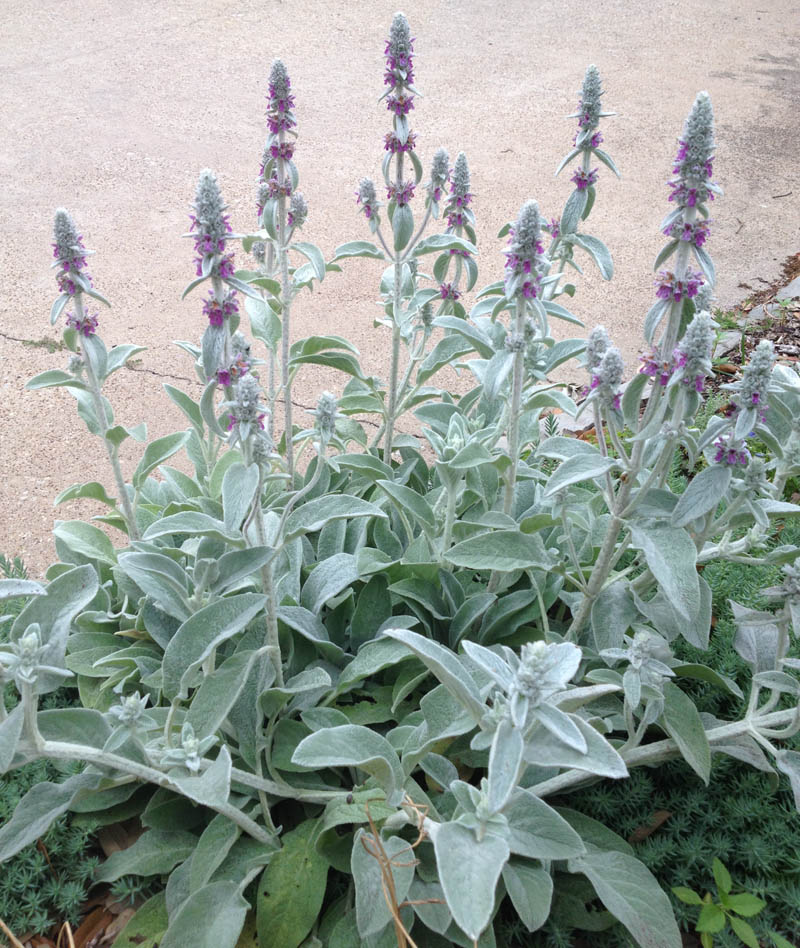Lamb’s Ears
Lamb's Ear, or Stachys, are named for their soft, fuzzy leaves. Lamb’s ears have silvery foliage that beautifully contrasts with any bold-colored plants that are near them, and they will soften hard lines and surfaces.

Growing
Lamb’s ears grow best in full sun. The soil should be of poor to average fertility and well drained. The leaves can rot in humid weather if the soil is poorly drained. Remove spent flower spikes to keep the plants looking neat.
Tips
Lamb’s ears make a great groundcover in a new garden where the soil has not yet been amended. When used to edge borders and pathways, they provide a soft, silvery backdrop for more vibrant colors. For a silvery accent, plant a small group of lamb’s ears in a border.
Recommended
S. byzantina forms a mat of thick, woolly rosettes of leaves. Pinkish purple flowers bloom in early summer. The species can be quite invasive, so choosing a cultivar may be wise. The many cultivars offer a variety of foliage colors, sizes and flowers. ‘Big Ears’ (‘Countesse Helen von Stein’) is a clump-forming perennial that produces fuzzy leaves twice as large as those of other species or cultivars.
Also called: lamb’s tails, lamb’s tongues
Features: soft, fuzzy, silver foliage; pink or purple flowers
Height: 6–18"
Spread: 18–24"
Hardiness: zones 3–8
Note: Many plants in the mint family contain antibacterial and antifungal compounds. When lamb’s ears is used as a poultice on wounds, it may actually encourage healing.


